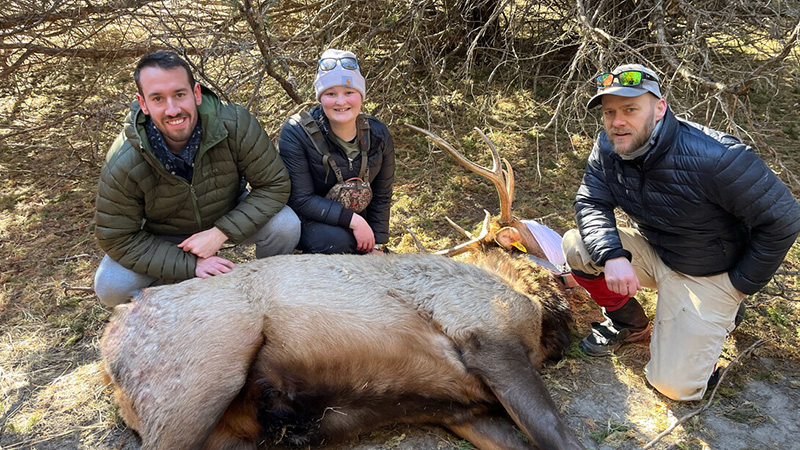
By IANR News
Elk returned to Nebraska in the 1960s after being eliminated from much of the Northern Great Plains in the late 1800s. Since then, elk numbers have expanded, and they now occupy much of western Nebraska.
A team of researchers from the University of Nebraska–Lincoln and the Nebraska Game and Parks Commission began a comprehensive study of elk behavior and population dynamics in 2022. They recently published the first findings from their research in the journal Biological Conservation.
Elk have been studied extensively in mountainous and coastal populations across North America, but fewer studies have occurred in prairie-agricultural landscapes such as Nebraska. Elk are highly valued by hunters but can also cause damage to crops. There was a need for reliable data about areas occupied by elk and their movements throughout Nebraska to inform wildlife managers tasked with responding to public interest and concern. Tabitha Hughes, a doctoral student at Nebraska and lead author of the new study, has spent the last three years working on these knowledge gaps.
“Not much is known about elk in Nebraska, which was a big motivation for our study,” Hughes said. “The better we understand these animals, the better equipped wildlife biologists will be to manage elk populations for the public to enjoy while also mitigating crop depredation.”
The team used helicopters to locate more than 200 female and male elk across Nebraska and outfit them with GPS tracking collars. The collars collect highly accurate locations of the animals and relay them to the researchers via satellites. Studying elk in Nebraska took the team to some expected natural landscapes, but also to places most people might not expect to find elk.
“We captured elk in many wild places, including the forested canyons of the Pine Ridge and the wide open spaces of the Sandhills,” said John Benson, associate professor in the School of Natural Resources and one of the project leaders. “We also caught a few elk in areas with vast stretches of crop fields in every direction and very little natural habitat. Studying elk in the highly variable landscapes across Nebraska highlights just how adaptable these animals are.”
Follow the rest of the story at https://news.unl.edu/article/scientists-study-movement-of-elk-in-agricultural-landscapes